Published on March 2, 2013
Twice before, weather had delayed the first test flight. High winds had dogged the plans and even today, on March 2, 1969, the winds were uncooperative. Nonetheless, the French waited patiently. British observers and engineers were on hand as well. Finally, as the morning gave way to afternoon, the winds began to subside. The decision was made — the first flight of the Concorde, a British and French joint project that would launch the famed supersonic airliner, would take place. An extensive preflight check was done and the French test pilot, André Turcat, from Sud Aviation, prepared for take off.
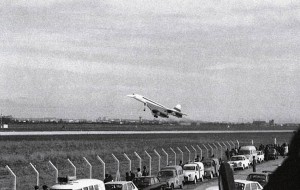
The Concorde Project
The road to the first test flight was hard and long. The design and development of the Concorde had been a costly, complex process. All of the latest, most modern technologies were rolled into the creation, a reflection of the highest achievement of the age in commercial aviation. The goal was radical — supersonic flight that would span the Atlantic Ocean, linking Europe and the United States in just 3 hours and 45 minutes.
By February 1965, construction begin on two prototypes. Fittingly, one was to be built by Aerospatiale at Toulouse (designated 001), and the other by BAC at Filton, Bristol (designated 002). The French construction finished before the British — by about six months — and after four long years after the start of manufacturing, the plane was ready for its first test flight out of Toulouse.
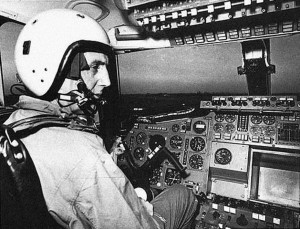
The First Flight
With the British test pilot, Brian Trubshaw, looking on, no doubt quite a bit envious (though his time would come in October), André Turcat, his copilot and flight engineer, plus a small team of test engineers, taxied out to the runway for take off. Assembled at Toulouse to observe was the international press corps — the first flight of the Concorde was a major event in aviation history.
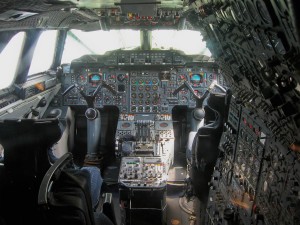
At 15:30 GMT, André Turcat advanced the throttles and the Concorde rolled down the runway. At the specified airspeed, he gently pulled back on the yoke — itself a motorcycle-like set of grips that were perfectly in line with the advanced design of the arrow-shaped, supersonic dart of a plane. The nose came up gracefully as the four, huge Olympus 593 engines roared a deafening, all-powerful note. The engines were the heart of the plane and had been built jointly by France’s SNECMA and the Rolls Royce Bristol division.
Gently, the plane lifted off and soared skyward. The press corps erupted into cheers, though they couldn’t hear each other over the roar of the engines. The plane climbed out straight ahead and disappeared from view. The test was obviously going well. Thirty minutes later, the Concorde returned to Toulouse and gently touched down on the main runway. Rolling out to a stop and then taxied back to the hangar for evaluation.
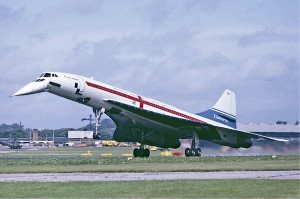
Final Words
In the early evening, the test pilot, André Turcat, met with the press to describe the plane’s handling. He summed it up with characteristic pride, “Finally the big bird flies, and I can say now that it flies pretty well.” In that 30 minutes, Turcat had taken the plane to 10,000 feet and held the speed below 480 km/hr. There were no adverse issues encountered; in fact, the plane performed almost exactly as was predicted.
On April 9, 1969, Brian Trubshaw would take off in the Bristol-buildt 002 for its first test flight. The honor of the first flight had fallen to the French and, as well, since they were farther along in the test program, it would fall to France too to prove the plane’s supersonic capabilities. For that flight too, the French pilot, André Turcat, would take the honors.
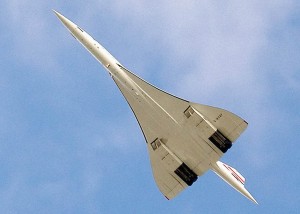
Ultimately, the Concorde would achieve speeds of 2,040 km/hr. Despite its extraordinary capabilities, however, the plane would never be economically feasible. It never turned a profit in its entire 27 year life span, having finally entered commercial service in 1976. To this day, however, the Concorde evokes pride, awe and amazement, even if it is nearly 50 years behind in technological development. It was then, and remains today in the mind of the public, the Queen of the Skies.
Today’s Aviation Trivia Question
The Americans too had a supersonic design in the works at the time called the SST. Sadly, it never made it into manufacturing. Why?

A loud-mouth senator, whose name I cannot recall waged a tremendous campaign against government approval of the project. There used to be a joke among aviators, “If God had meant for man to fly, He wouldn’t have invented Senator ________________.”
I seem to remember he was from Wisconsin, but I could be wrong.
I just recalled that the senator who led the opposition again the SST was Proxmire.
MONEY!
Well, both designs (submitted by Boeing AND Lockheed) apparently had a weight problem. I remember a Lockheed engineer declaring: “We could build an airplane that, if empty, would fly across the Atlantic, but the airlines don’t like that… Or if loaded with passengers it would fly only about halfway… and the passengers wouldn’t like THAT…).”